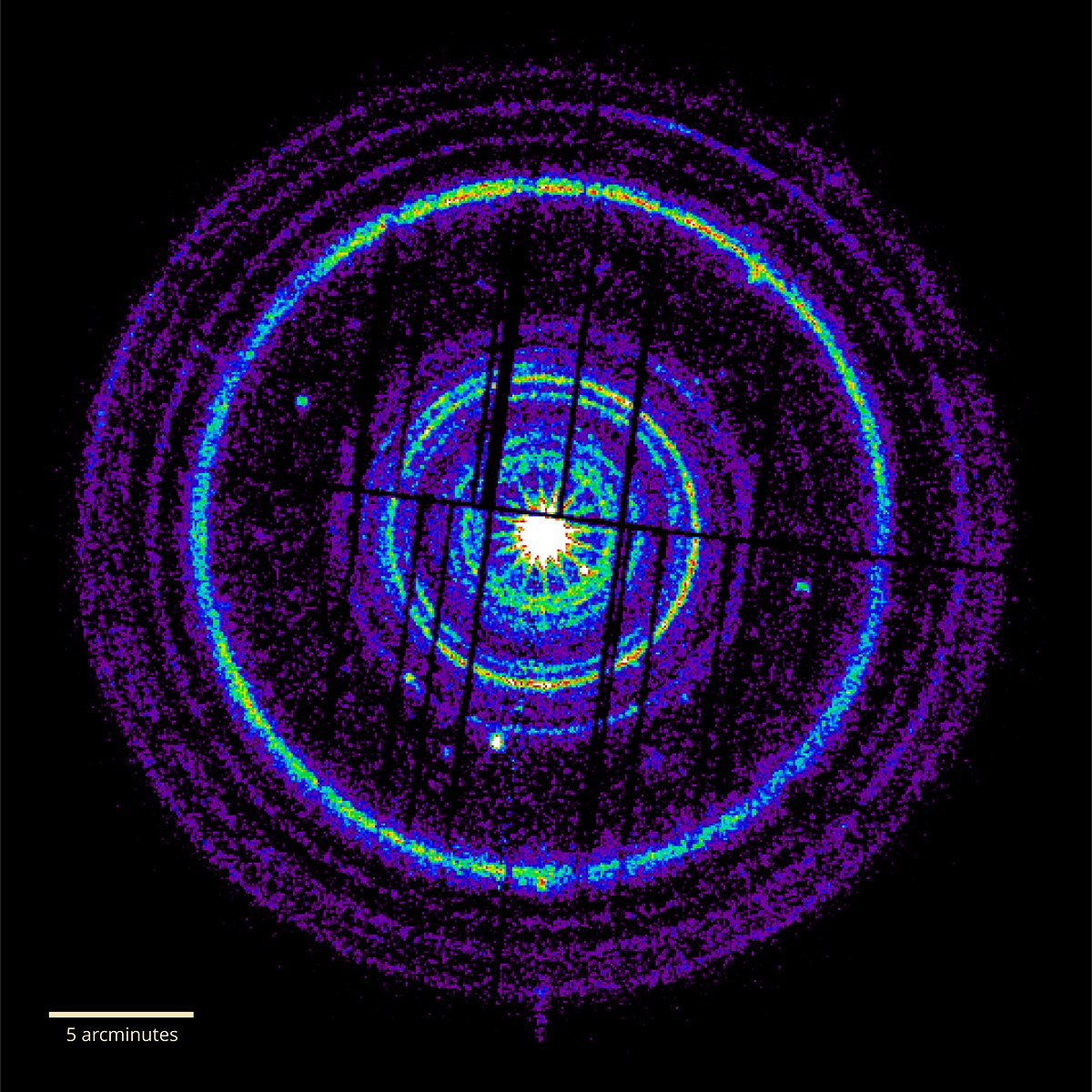On the morning of Sunday 9 October 2022, the detectors on board all major science satellites were hit by an intense high-energy radiation signal, which, after a few hours of disbelief and confusion, was recognised as the brightest gamma-ray burst (abbreviated as GRB) in history, thanks to an extraordinary combination of intrinsic brightness and proximity. In fact, despite occurring in a galaxy nearly 2 billion light years away, GRB221009A is among the closest GRBs ever observed, and it has been calculated that a GRB this bright could only occur once every ten thousand years.
Part of the X-rays produced by this incredibly bright event could be observed up to several days later as a series of concentric rings generated by 20 dust clouds in our Galaxy, whose distance and composition could be accurately reconstructed.
The detailed study of these rings has just been published in The Astrophysical Journal Letters by an international team of scientists led by Andrea Tiengo, associate professor at the IUSS School for Advanced Studies.
Four other members of the IUSS School are part of the research group that conducted this study: Paolo Esposito, also an associate professor in astronomy and astrophysics, Andrea Sacchi, holder of a research grant, Beatrice Vaia, a student in the National Doctorate in Space Science and Technology, and Simone Filippi, a student in the Master of Science in Physical Sciences at the University of Pavia and a student in the Science, Technology and Society class at the IUSS School.
Detailed info available at:
https://www.esa.int/Science_
https://www.nasa.gov/feature/



